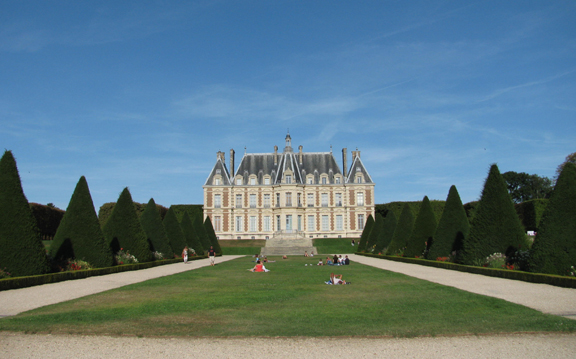
A visitor to Paris with a desire to go biking needn’t content himself with the dangers and car fumes that go with city cycling. Flowing south from the edge of Paris there’s a bike path leading out of the city that you can pick up just behind the Montparnasse Train Station in the 14th arrondissement. Pass through an archway leading off Place de Catalogne and you enter into the peacable world of Paris’s southern suburbs along a bike and foot path called La Coulée Verte du Sud Parisien. The path flows to the town of Massy, a distance of 7.4 miles (12 km).
The first mile or so of the path progresses with fits and starts as you wind your way outside of the city and into the immediate suburbs of Malakoff then Châtillon. Little by little the path then settles into an easy-going, occasionally rolling, unhurried green (verte) flow (coulée) passing through the relatively tranquil towns of Bagneux, Fontenay-aux-Roses, Sceaux, Châtenay-Malabry, Antony, Verrières-le-Buisson, and into Massy.
Two-thirds along the way is the most well-known greenery to the immediately south of Paris, Parc des Sceaux, a delicious spot for an afternoon loll-about after a genteel ride out and before a satisfied ride home.
Yesterday, I pedaled the path in the company of Va-nu-pieds. Va-nu-pieds is the pseudonym—the lens name, if you will—of a French photographer whose work on France Revisited can be found here. A va-nu-pieds, literally “goes barefoot,” is a vagabond, a tramp, a ragamuffin.
Before going barefoot in the park, however, we spotted from the Coulée Verte the Château de Sceaux.
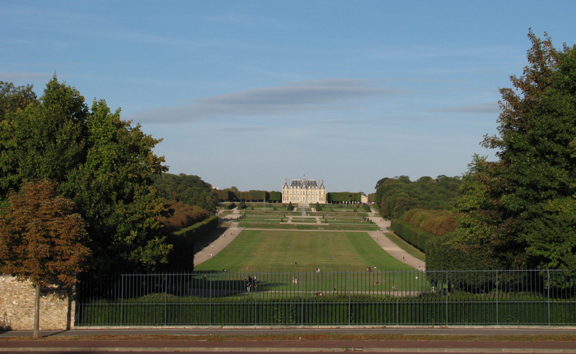
One glimpse of it and you’re sure to want to approach for a closer view.

Entrance is free. You can walk your bikes through the park, but Va-nu-pieds would have none of that, so we attached them outside and spend a few hours wandering around.
The chateau was mostly constructed under the ownership of Jean-Baptiste Colbert (1619-1683), Louis XIV’s Minister of Finance. It’s a photogenic place in a post-card kind of way, but the main attraction of Sceaux is the park, created by the grandfather of French landscape gardeners André Le Nôtre (1613-1700). Le Nôtre’s work at Versailles was already well underway by the time Colbert purchased Sceaux. Hired by Colbert then by Colbert’s son the Marquis de Seignelay, Le Nôtre designed what remains one of the pleasing and accessible noble parks of the Paris region.
As with other noble parks in the region it had its 19th-century era of ruin but has since been lovingly restored
Its trademark features are its cascade,

which includes these spouts,
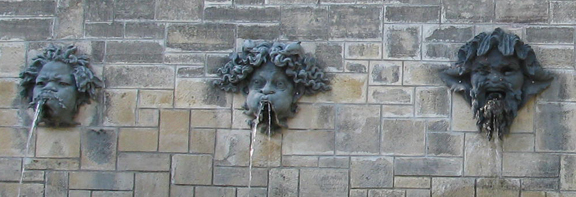
its Grand Canal,
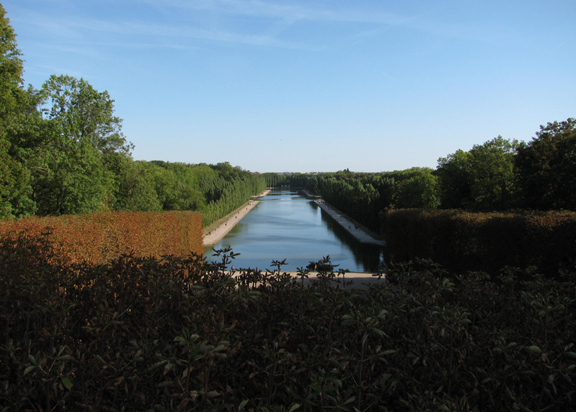
and its perfectly aligned rows of populars, plane trees, horse chestnuts, lindens, and other trees whose names I never remember.
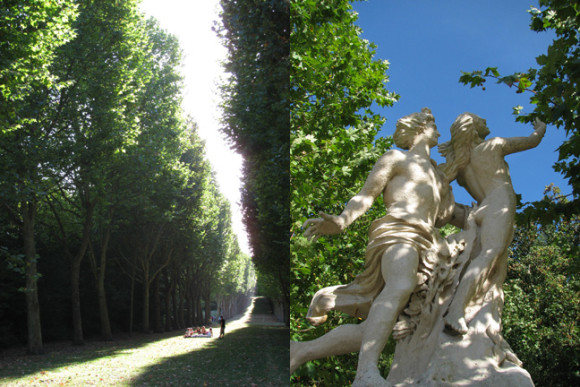
The sculptures are less noteworthy, but I like the image above right.
It’s simply a delightful place for a stroll, a picnic, a lounge on the grass (actually allowed here!), photographic explorations, a jog, prolonged conversations, a nap, romance, and, as far as I’m concerned, a illicit pee in the woods. There are snack stands and cafés in the park.
Other than biking along the Coulée Verte, Parc de Sceaux is easily reachable from the center of Paris by suburban train. Take RER line B, direction Massy-Palaiseau, directly to the Parc de Sceaux stop, a 21-minute ride from Chatelet-Les Halles. The park is then a 3-minute walk from the station.
(c) Gary Lee Kraut

